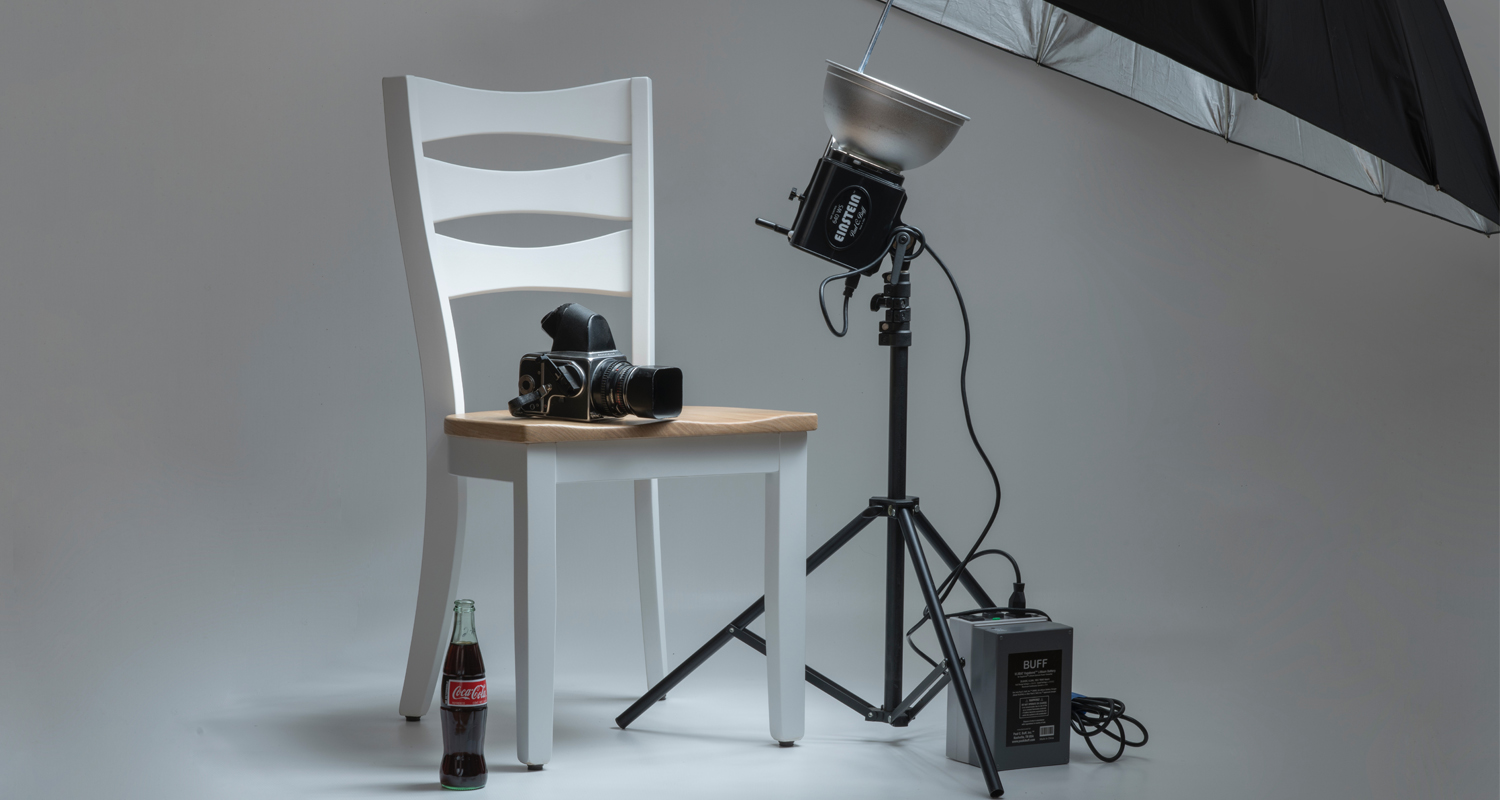In ecommerce, first impressions matter.
When consumers land on your site and notice that you use high-quality photos, they are most likely to continue browsing and may even decide to purchase right then and there.
Beautiful product photography has the power to turn a casual lurker to a loyal customer. It builds trust and creates transparency, leading potential consumers to believe that what you’re offering is worth their money.
With that being said, you don’t need to splurge a ton of money to create retail-ready photos. Renting a studio and investing in expensive equipment certainly isn’t a requirement. Truth be told, you only need a smartphone and cheap materials you can find at a craft store to produce great results.
From making your own lightbox to post-processing techniques, here are some of our favorite DIY photography hacks:
Product photography hack 1: Create a DIY lightbox
When it comes to product photography, having a plain background and consistent lighting is crucial to capturing that perfect shot.
The goal is to allow the right amount of light on your setup. This way, when you take photos of your products you’ll be able to bring the best and true colors of your merch.
In a professional setting, photographers often use a light box or light tent to distribute the light on the subject properly. They are square-shaped, enclosed tents with translucent walls designed to control the lighting and produce accurate colors and shadows.
Unfortunately, pre-made light boxes can be pretty expensive, and not everyone has the resources to procure one.
The cheapest way to recreate the effect of a lightbox without having to purchase a pre-made one is to create a makeshift one of your own. That way, you can capture clear, crisp images with minimal shadows.
You will need:
- Huge cardboard box
- Scissors or craft knife
- Ruler
- Tissue paper
- White poster board
- Tape
How to make your own lightbox
- First things first, you need to secure a cardboard box that is large enough to fit your product. You can either purchase one or solicit stores for discarded or unused boxes.
- Tape the flaps to create a flat bottom.
- Cut rectangular holes on each side (with the exception of the base) of the box to make “windows”. It would help to use a ruler to make sure that they’re even.
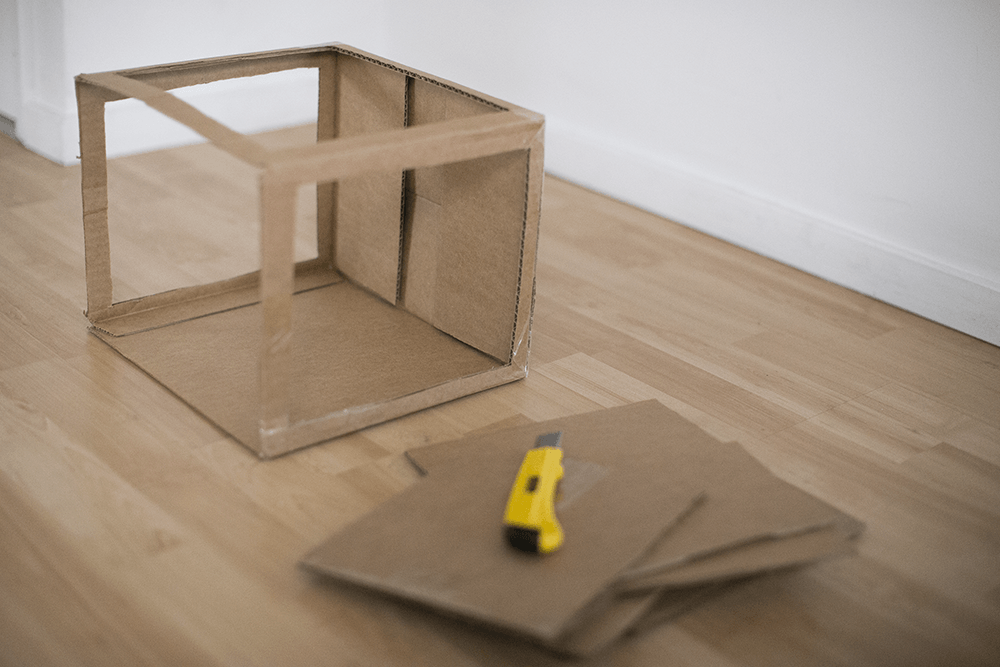
This is how your box should look once you’ve cut it
- Cover the windows with tissue paper. This would result in your shots having softer lighting, saving you from having to make drastic edits in the post-production phase.
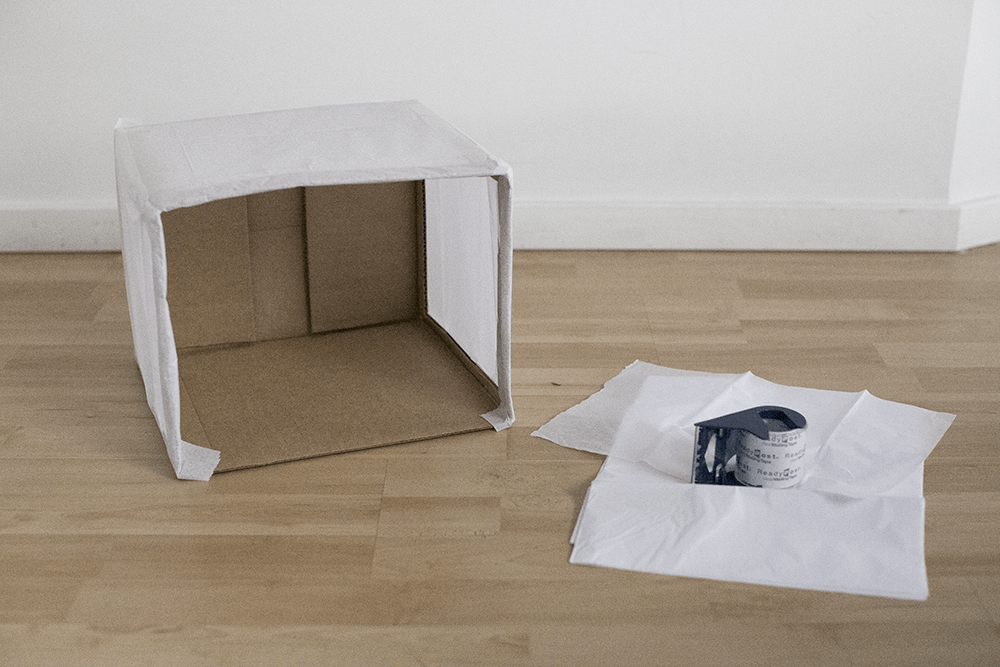
Make sure you cover the windows properly
- Lastly, tape the white poster board to the inside edge and “floor” of your box. This would serve as your main background when capturing photos.
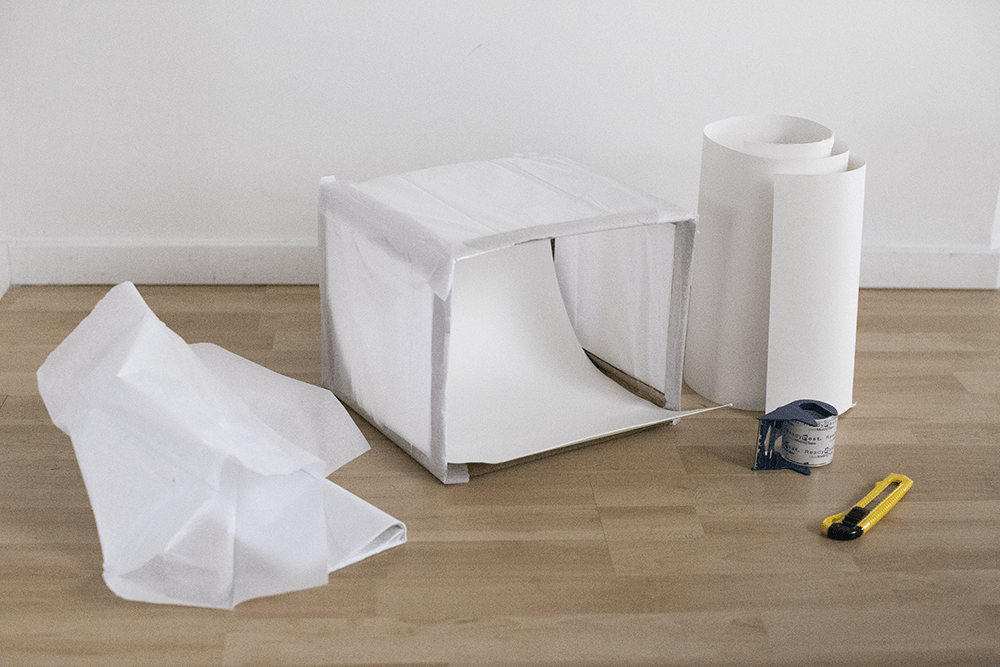
Your DIY lightbox is almost ready
In the end, you should have something that resembles this:
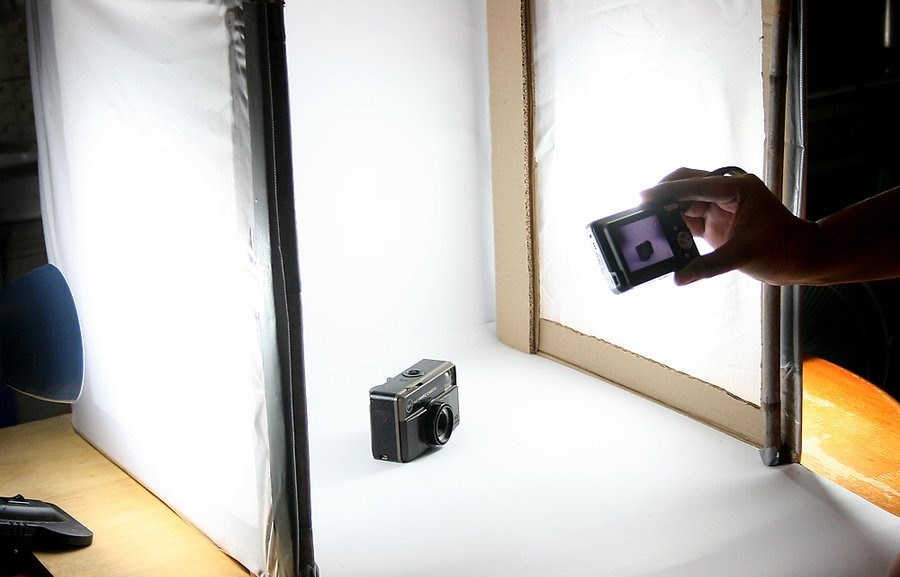
Now you’re ready to take the best product photos ever
Product photography hack 2: Use natural light for your shoot
Unless you insist on shooting in a studio, it’s not a requirement that you fork out thousands on expensive lighting equipment to take high-quality product photos.
For this product photography hack, all you need is the good ol’ sun.
Using natural lighting for product photography essentially means that you can shoot anywhere you wish.
The ideal location, though, is an indoor area with a big window that delivers ample sunlight. It can be your living room, a garage, or even just a corner of your home. It doesn’t necessarily have to be in a studio since you want to save your resources for other facets of your business.
As long as you get adequate natural light, space, and equipment, you can turn any place into a suitable location for a shoot.
Shooting in-context photos is another story, though. With contextual product photography, you have free rein in choosing your location as long as it fits the theme of your shoot.
It’s worth noting that just because you have found the perfect area doesn’t mean you will automatically capture picture-perfect product images.
Here are a few do’s and don’ts that you have to keep in mind:
Natural Lighting Photography Do’s
- Shoot at the brightest time of the day — late morning or early afternoon
- Be aware of where shadows fall as they may interfere with your photos
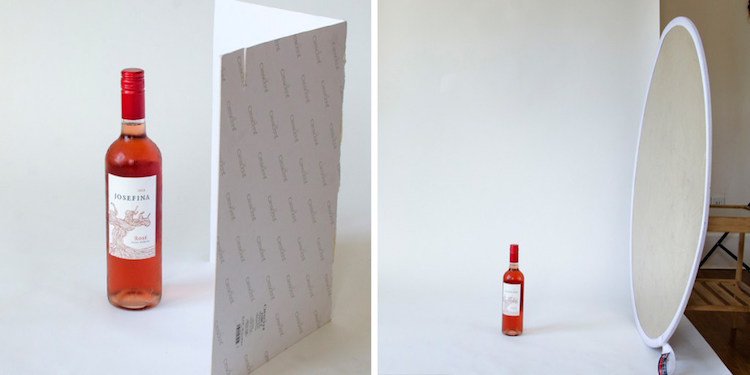
You can use a mirror or white cardboard to bounce the light to where you want it to be
- Take note of the direction in which your window faces. East-facing windows typically provide the best lighting, while west-facing ones tend to deliver sun flares especially when the golden hour is approaching.
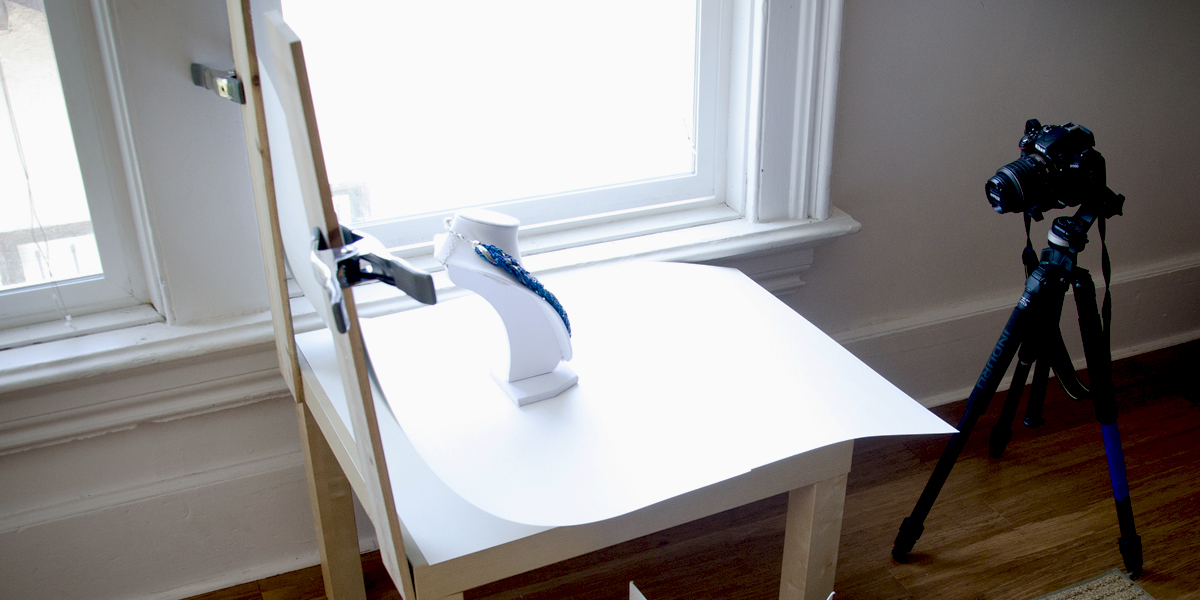
Try to avoid sun flares in your product pictures
Natural Lighting Photography Don’ts
- Don’t place your product behind the light source
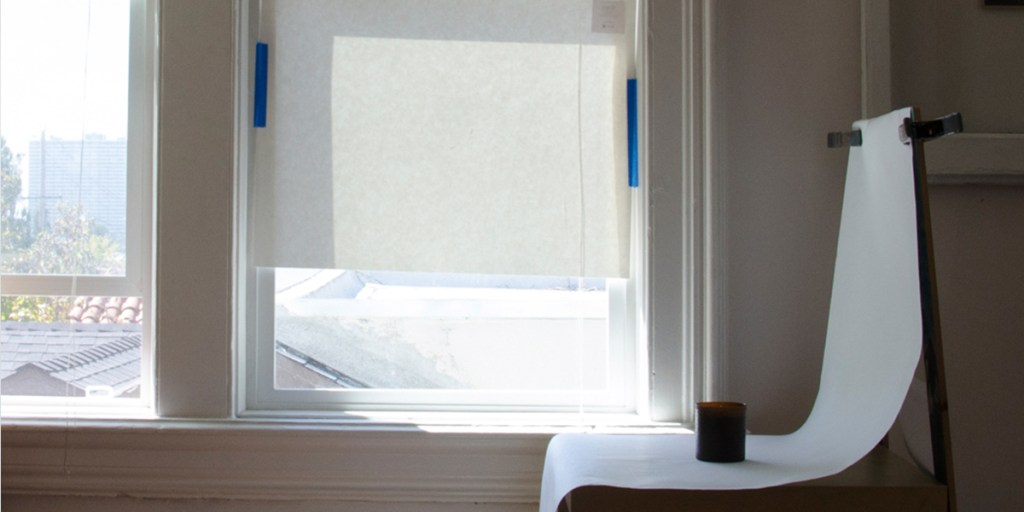
This is why you shouldn’t place your product behind a light source
- Don’t shoot when the sunlight is too harsh
- Don’t forget to focus on the product. Flatlays and in-context shots are still needed, but for the most important shots you have to capture are those that highlight the qualities of your product
- Don’t position your product more than a foot away from the window.
Product photography hack 3: Make a DIY reflector
A reflector is always handy, especially when used to even out the shadows on the other side of your product.
Doing so will result in more light without utilizing artificial lighting sources. But you will still need to experiment with the angles to see what works best for your product photography.
With this DIY product photography hack, creating your own reflector is fairly simple.
You will need the following:
- Flat, white material (ideally paper, cardboard, or foam board)
- Aluminum foil
- Tape
- Clamps
How to make your own reflector
- Fold the piece of cardboard in half
- Cover it with aluminum foil
- Use the clamps as makeshift stands to prevent it from bending
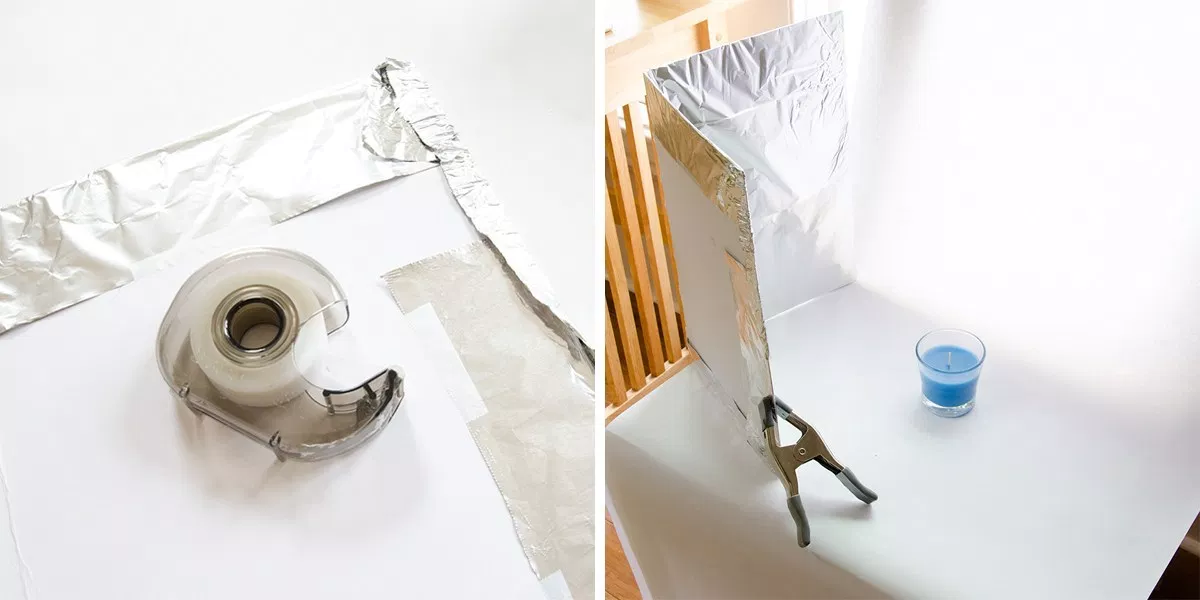
Does your reflector like this one?
Product photography hack 4: Create a white background with a sweep
A plain, white background not only helps create uniformity and allows your customers to evaluate the details of your products better, but it also saves you time from having to do heavy editing during the post-processing process.
We’re not suggesting that you paint your wall white. But we do recommend that you create a sweep, which is essentially a white backdrop that transitions seamlessly from the vertical to the horizontal surface.
The size of your sweep largely depends on the size of your products.
The only thing crucial here is that the sweep should be larger than the item, and ideally, you want it to fill up the entire camera frame.
For this DIY product photography hack, you are free to use any white material of your choosing.
You can opt for craft paper or plain sheet, but the shinier the material is, the better.
This is because the shiny surface will reflect light back onto the product, capturing its true color with near accuracy.
DIY tabletop photography setup for smaller items
If you’re shooting small items, a DIY tabletop photography setup will work. It will give you complete flexibility and control over your light source.
To create one of your own, you will need:
- A small table
- Two pieces of wood
- Spring clamps
- Sweep material of your choice (Note: It should be large enough to cover the table and wooden panels)
How to create your own tabletop photography setup
- Nail your wood strips vertically to the table
- Clamp the sweep to the top of the planks using the clamps
- Let the sweep fall down across the table
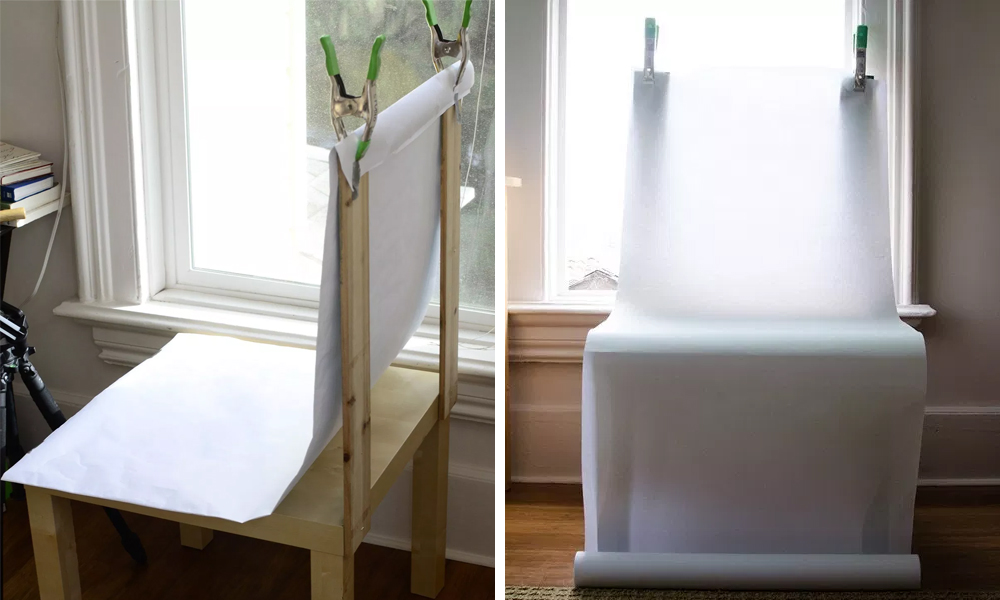
This is how your sweep should look. You could also use a chair if needed.
DIY product photography setup for larger items
Now if you’re shooting larger products like furniture, it only makes sense to have a larger sweep — one that’s much larger than the item.
The same rule applies: you want the sweep to fill the entire shot when you look through the camera lens.
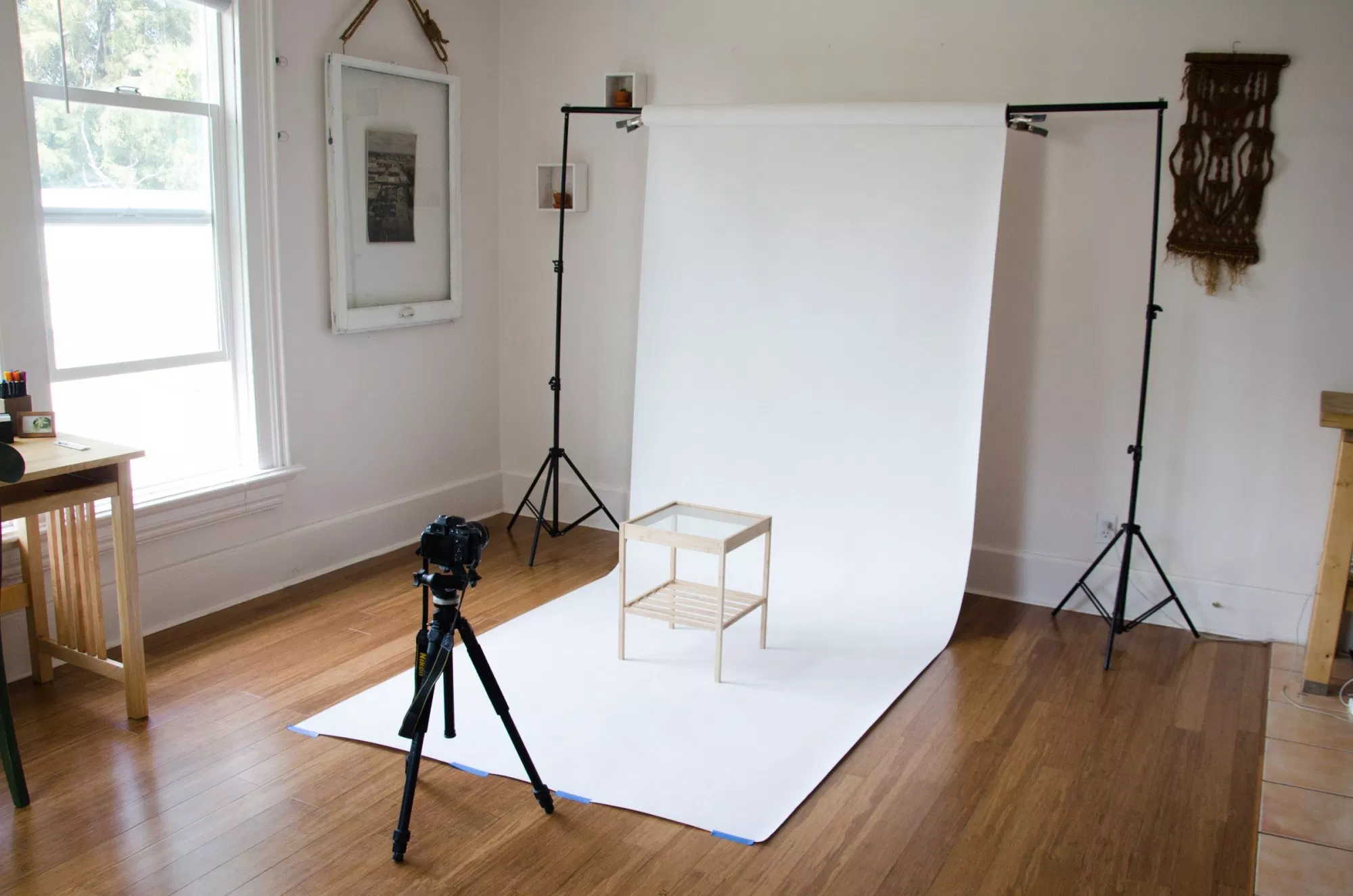
Fear not, this setup looks more complicated than it really is
While you can always buy a large sweep, we still recommend creating one of your own especially if you’re on a tight budget.
You will follow the same steps as the tabletop table, except that you have to replace the table and clamps with a background stand.
Then, use a white sheet that’s three times the size of your product and attach it to the stand using clamps.
Product photography hack 5: Hang items with fishing line
Taking photos of smaller items like jewelry?
One great hack is to use a fishing line to make them stand up during the shoot.
If you don’t have access to a fishing line, you can also use a thin white string or thread to suspend the items.
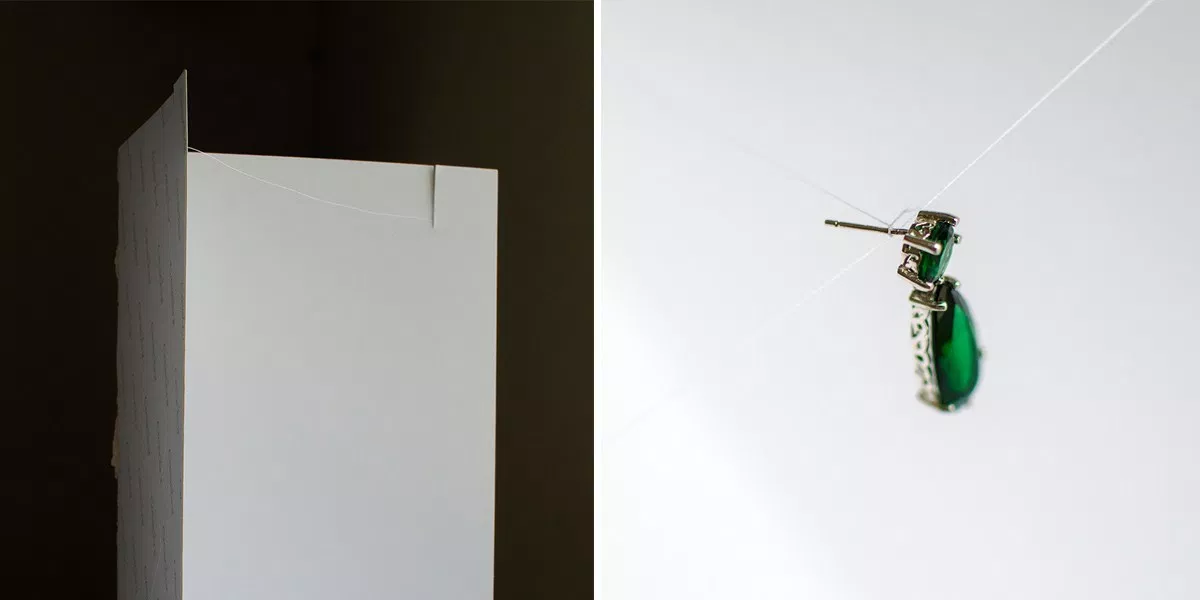
Use a clear fishing line and white cardboard here
For a makeshift white and plain background, use a piece of cardboard that’s folded in half and stretch the string from one side to the other, as seen below.
Be sure that the minuscule products are stable before taking the photo.
Product photography hack 6: Retouch your product photos
The last DIY product photography hack to make product photography photos that pop is post-processing.
There are a variety of ways in which you can edit your photos to perfection, but here are some of our tested and proven techniques:
- Create a ghost mannequin effect: This effect provides the product additional dimension and shows parts of it that would otherwise be obscured by a mannequin or model in a single shot. By doing so, you’re giving your store a more professional touch as you’re providing an easier way for your customers to visualize the product in their heads. You can check out the full tutorial here.
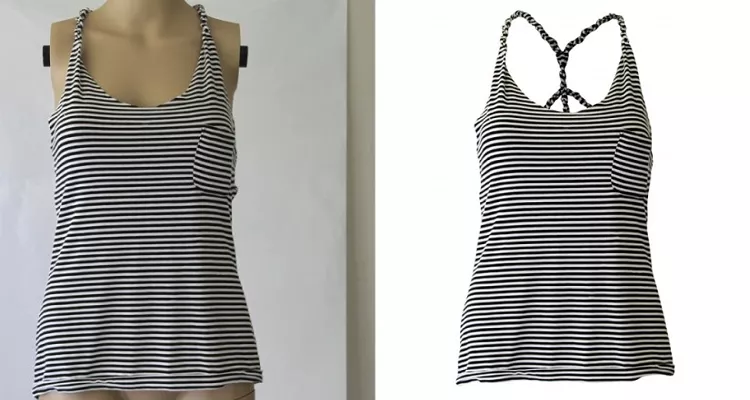
You can create a ghost mannequin in minutes using Photoshop
- Add a drop shadow: If you want to add more depth to your photos, adding a drop shadow is the way to go. Doing so will make your images look more natural, not to mention professional. You can learn the entire step-by-step process here.
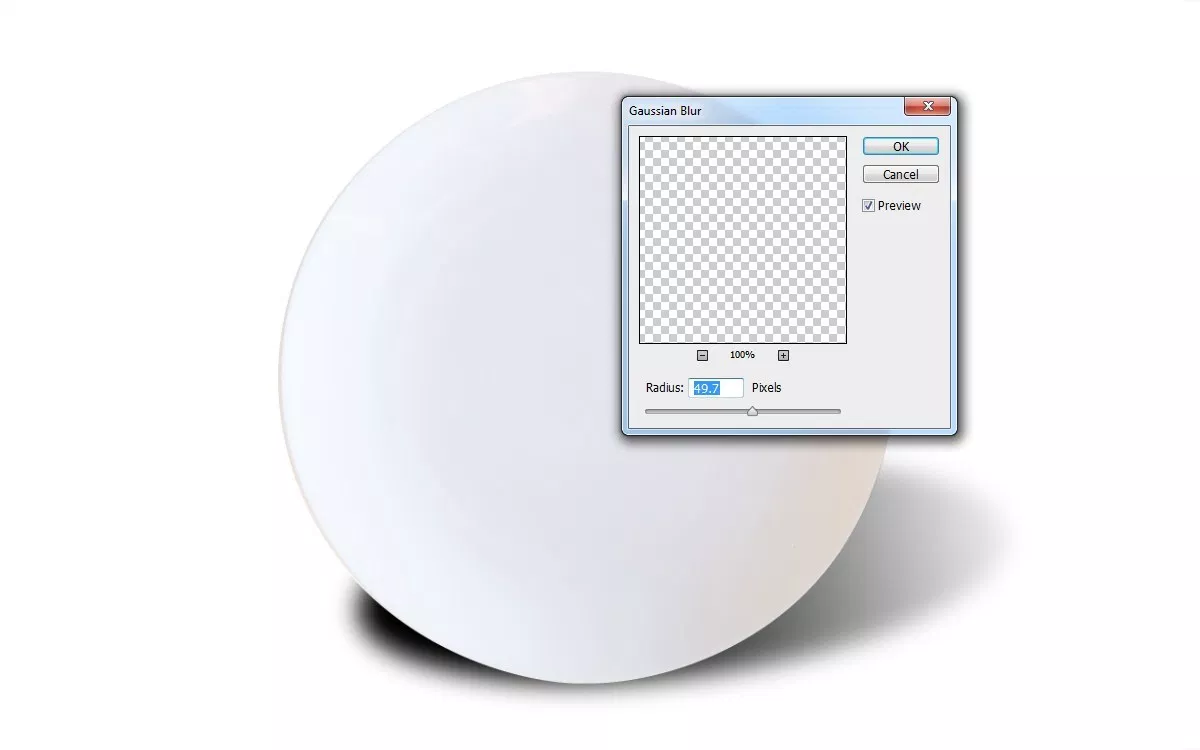
Check our tutorial above and learn how to add a drop shadow to your products
- Use photo editing apps: This isn’t really a hack, but if you want to save time from having to do extensive edits on your photos, you can rely on apps to speed up the process. You can find our favorite tools and resources here.
Last words…
You don’t need an expensive setup to create retail-ready product photos. You just need to get crafty and pay your toolshed a quick visit.
The idea here is to use the sun as your ally. The more natural light you can get, the better. Just be careful because if you don’t harness the power of the light properly, your photos might not turn out the way you want them to.
That being said, it’s all about using natural light to your advantage. A lightbox can concentrate the sun rays where you want them to be and a reflector can bounce light to create stunning highlights.
Just get creative and have fun!
If you’ve ever used one of these product photography hacks, leave a comment below and tell us about your experience.
*Thanks Jimdo for the DIY lightbox pictures!

